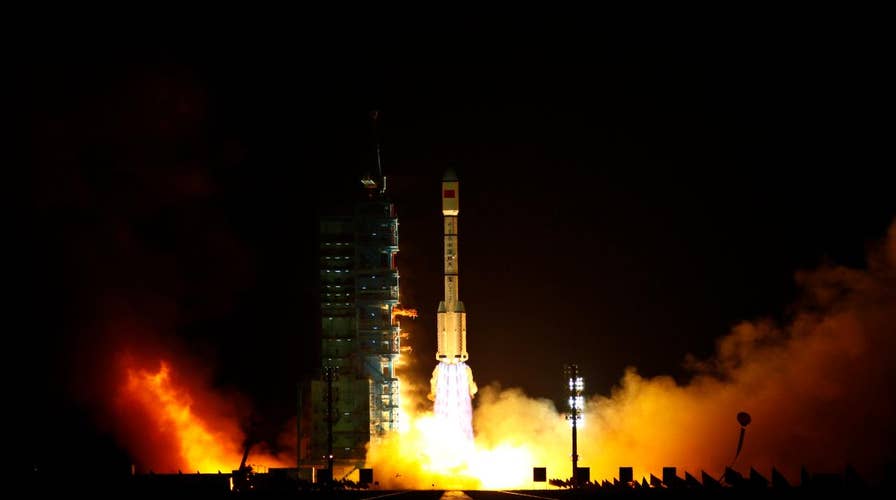Rogue spacecraft expected to re-enter earth’s atmosphere
A Chinese space station lost contact with Tiangong-1, a craft that is expected to re-enter the earth’s atmosphere sometime in the beginning of 2018. Some are concerned debris may hit populated areas.
No, this isn't a joke. China's runaway space lab, Tiangong-1, is set to fall to Earth sometime on Sunday, which is April Fool's Day, or by early Monday.
In an update posted on April 1, the European Space Agency (ESA) said it expects the current estimated reentry window runs from "stabilised and shrunk further to a time frame running from the night of 1 April to the early morning of 2 April (in UTC time)."
The Virtual Telescope Project also has a live, real-time look at the space lab as it makes its descent towards Earth.
CHINA'S SPACE STATION EXPECTED TO HIT EARTH SOON -- POSSIBLY IN EUROPE
"The Tiangong-1 Chinese space station is re-entering our atmosphere soon," representatives for the project wrote in a statement obtained by Space.com. "The Virtual Telescope Project and Tenagra Observatories offer you the unique chance to see it during one of its very last passages across the skies. You can join us online, via the internet, from the comfort of your home."
In a post on its website, Holger Krag, Head of ESA’s Space Debris Office, said that the craft could fall anywhere across a vast swathe of the globe, encompassing much of North America and most of South America.
“Owing to the geometry of the station’s orbit, we can already exclude the possibility that any fragments will fall over any spot further north than 43ºN or further south than 43ºS,” Krag said.
“This means that reentry may take place over any spot on Earth between these latitudes, which includes several European countries, for example," Krag added. Tiangong-1 could also re-enter Earth's atmosphere over Africa, much of Asia, most of Australia and part of New Zealand.
Reuters, citing statements from the ESA, reports that the probability of someone being hit by a piece of debris from Tiangong-1 is 10 million times smaller than the chance of getting hit by a bolt of lightning. This is due to the fact that approximately 71 percent of the Earth is covered by water.
Tiangong-1 stopped responding to China’s commands 2016, according to Space.com. Scientists have since anticipated the space station returning to Earth as a sort of manmade 'meteorite,' but are unsure where it will land.
METERORITE HUNTERS: SCIENTISTS SET TO SCOUR ANTARCTICA FOR RARE SPACE ROCKS
In recent months, scientists have had a better approximation of where the station may land. According to the Washington Post, they’ve warned that Spain, Portugal, France and Greece may see the 19,000-pound meteorite plummet within their borders.
Scientists say the Tiangong-1 is currently spinning around Earth at 17,500 mph, which amounts to a trip around the planet every 90 minutes. As the station descends closer to Earth and gains momentum, the thicker air will cause friction to surround the craft in superheated plasma, the Post reported.
Fox News' Bradford Betz contributed to this report. Follow Chris Ciaccia on Twitter @Chris_Ciaccia

